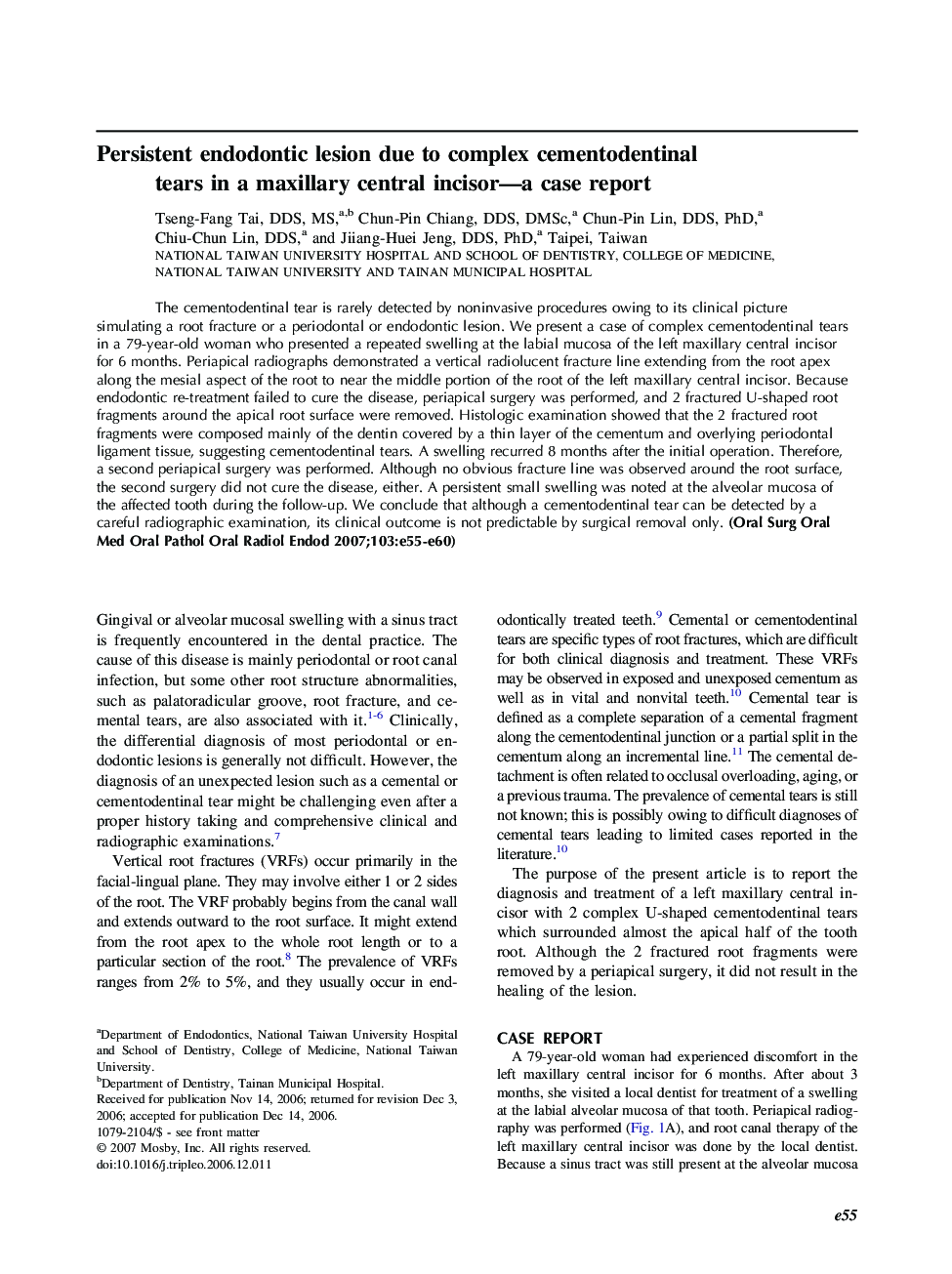| Article ID | Journal | Published Year | Pages | File Type |
|---|---|---|---|---|
| 3169391 | Oral Surgery, Oral Medicine, Oral Pathology, Oral Radiology, and Endodontology | 2007 | 6 Pages |
The cementodentinal tear is rarely detected by noninvasive procedures owing to its clinical picture simulating a root fracture or a periodontal or endodontic lesion. We present a case of complex cementodentinal tears in a 79-year-old woman who presented a repeated swelling at the labial mucosa of the left maxillary central incisor for 6 months. Periapical radiographs demonstrated a vertical radiolucent fracture line extending from the root apex along the mesial aspect of the root to near the middle portion of the root of the left maxillary central incisor. Because endodontic re-treatment failed to cure the disease, periapical surgery was performed, and 2 fractured U-shaped root fragments around the apical root surface were removed. Histologic examination showed that the 2 fractured root fragments were composed mainly of the dentin covered by a thin layer of the cementum and overlying periodontal ligament tissue, suggesting cementodentinal tears. A swelling recurred 8 months after the initial operation. Therefore, a second periapical surgery was performed. Although no obvious fracture line was observed around the root surface, the second surgery did not cure the disease, either. A persistent small swelling was noted at the alveolar mucosa of the affected tooth during the follow-up. We conclude that although a cementodentinal tear can be detected by a careful radiographic examination, its clinical outcome is not predictable by surgical removal only.
